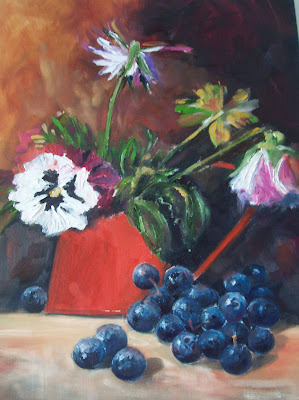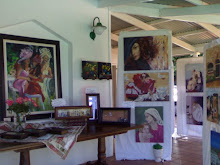 Bev's watercolours and in particular her Koi paintings, never fail to delight. Her ability to capture the reflective nature of water and the colourful, yet almost translucent scales of the Koi, is a special talent!
Bev's watercolours and in particular her Koi paintings, never fail to delight. Her ability to capture the reflective nature of water and the colourful, yet almost translucent scales of the Koi, is a special talent!Something worth noting about these popular subjects, is the following which I picked up from Wikipedia:
What are known as 'koi' in English are referred to more specifically as 'nishikigoi' in Japan (literally meaning 'brocaded carp'). In Japanese, 'koi' is a homophone for another word that means 'affection or love'; koi are therefore symbols of love and friendship in Japan.
The paintings shown here are simply entitled Koi no. 1 (above) and Koi no. 3 (below) - both 760mm x 550mm








